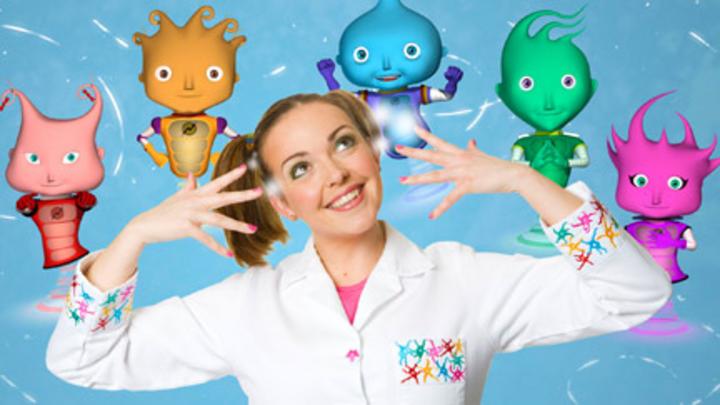 |
| Doctor Who |
Classic Who was always a kids show with elements of education, adventure, sci-fi and kooky weirdness bereft of budget. New Who moved towards the spectacular, the romantic, increasingly tear-jerk ridden story lines, like those cloyingly sentimental banking adverts desperate to generate cultural capital and put on a human face after bankrupting the financial system. Infantile stories about returning lost wooly jumpers and slow motion versions of Warhorse over a soundtrack stolen from some plonky acoustic cover of a vaguely nostalgic pop-song. Doctor Who degenerated into an endless twee department store chain Christmas advert with an Dickensian ghost which turns out to be yet another lone Dalek hiding under a tea stained bed sheet, defeated by hot butter dripping from freshly toasted crumpets messing up the aliens wiring.
And then the bombast. The pontification. The soliloquies. No longer there to solve the problem of the week, a weird alien in a quarry in Essex or the invasion of a warehouse by vikings, the Doctor now seems to has to save the whole universe. No. Not just the universe, but all of space and time itself - as if the cosmic balance itself were embedded in The Doctor or otherwise a Companion. Like some kind of Gallifreyan Aslan on the Stone Table, saviour of humanity in all its multifarious flavours through unleashing midiclorian timelord dna particle whatsit hand-wavey timey-wimey deep magic bunkum stuff. One almost wills Erekose to turn up and drive his black sword through him to put an end to this pretentious dishevelled scone eating tyranny.
Then there's the horror. The horror. No doubt fuelled by swelling fx budgets, increasingly visual, and decidedly adult orientated, while supported by scripts that were increasingly verbose and conceptually infantile. Was Waters of Mars really supposed to be a family show?
 |
| Family evening TV |
That's not "hide behind the sofa, there's a dustbin with a sink plunger coming", it's George A. Romero (may he rest in peace) zombie horror, but without the subtlety, message or intelligence to back it up. Russell T. Davis can pontificate about childhood scares all he likes, he's not a parent. I'm not letting my kids go anywhere near that, any more than I would let them near my vintage VHS collection of zombie films. And it's not just Waters of Mars, it's the Weeping Angels with their strobe-lights and flashing teeth, and countless other monsters where horror-tropes stepped over the invisible force-feild of appropriate. Then there is the adult relationship dross.
Young kids have no need for stories about boyfriend-girlfriend stuff, or girlfriend-girlfriend and boyfriend-boyfriend for that matter. Bills constant "Nah. I don't do boys" refrain. So what? It doesn't matter love, 10 year olds could not care less. And if they did, they'd pick up on the cues. Show, don't tell. Think about it. Children of my generation all knew Hank had a thing for Diane. We all knew that the Scooby Gang were a polyamorous dog-share club. We all vaguely worried how The Smurfs might go forth and multiply, but were happy for the little blue guys anyway. The stories didn't have to tell us these things, the characters didn't need to say it. We were smart kids. We knew what was going on, we could read the signs. I struggle to imagine who this stuff is really aimed at, too sentimental and thinly written for adults. Too gruesome and horrific for kids. Doctor Who seems to have lost its way, and on it's way, kept losing it's audience.
As Laurie Penny rightly wrote in the New Statesman: "Doctor Who is a different sort of hero. The Doctor solves problems not by being the strongest, the fastest or the one with the biggest army, but by outthinking everyone else in the room." In 2017, it has long been recognised that girls are out-performing boys academically, that out-thinking everyone else in the room is, in schools across the country, what girls do - strangely like Susan in An Unearthly Child. Making The Doctor a girl doesn't feel like a radical move, it's just recalibrating to adequately describe the status quo.
 |
| Nina and the Neurons |
 |
| Do You Know? Maddie Moate |
Assuming we're not facing a post-apocalyptic return to the dark ages and some form of eternal agrarian hell where the UKs economy reliant on jam exports, there is a societal problem when our best and brightest (who happen to be girls) are turned off the science, engineering and technology fields. Boys are being failed by the system, so we're going to expect girls to pick up the slack in the employment market. Remember, the BBC is pretty much a government agency, and it has a job to do. Arguably, a female Doctor Who - the central character in a science fiction show aimed at a higher age-range than Nina and Maddie, might just bridge the gap and keep girls inspired by science.
Except, despite popular ignorance, Doctor Who isn't really science fiction and The Doctor doesn't really do science or engineering or technology. Doctor Who does a fantastic job of showing humanity, wisdom, compassion and kindness - so uncommon for a male protagonist - but then swiftly let's it down with emotional shouting, martyr-complexes and deus-ex-machina plotlines. A man-sized fairy running around with a magic wand called a 'sonic screwdriver' that solves all his problems, whilst travelling in a TARDIS that he can't fix properly which gains and loses powers as required by the storyline with no recourse to logic, technology or physics. Magic in the garb of pseudo-science. Strangely not unlike how beauty products are marketed, here comes the science bit.
If we want a Doctor Who that really lives up to it's potential, then the series needs to have Science Fiction, the proper-stuff, with ideas and concepts about science at the very heart of its storytelling. Not fantasy and self-absorbed soap operatic melodrama in sci-fi drag. Perhaps I am asking too much. TV, and media people in general aren't great at communicating science, beyond the Twilight Zone, it's difficult to think of proper original sci-fi on TV that wasn't straight adaptation (yes, space opera and space westerns abound). The Science Museum and the Wellcome trust do great curational work, but transforming that into engaging narrative takes a different skillset. Sophie Dauvois and Rachel Ortas at Okido do great work for early years, could they up their game to a pre-teen audience? Where's Maggie Philbin when we need her? Derek Meddings modelling the inspiring mega-engineering feats of the Thunderbirds? Hard science fiction hasn't been in vogue for a long time. It's hard to imagine where the talent pool to write and direct a decent Doctor Who would come from.
Interestingly the new 'show-runner' Chris Chibnall, previous work in the Doctor Who universe on the admittedly more adult orientated Torchwood gave us this:
| Caroline Chikezie as Cyberwoman |
Then to return to my earlier point in space-time. Girls are currently ahead academically, and a fictional heroine who represents their triumphs is great. A wonderful thing, reflective of where we are. A heroine who out-smarts, and displays their humanity, questioning and tolerance as well as their understanding and knowledge. But I can't help but feel for the boys who getting left behind, the boys who go on to commit knife crime, the boys who will grow up to join the largest demographic at risk of suicide and all the issues that suggests. The boys who've been failed by the magic Doctor, who can just wave problems away with his magic wand rather than solve them. The boys who get a Spider-man who is granted a hand up the superhero-career ladder from his weapons grade father-replacement figure at Stark Inc. rather than struggle through life through hard work and application, and achieve on his own merits. Boys whose media landscape only features fictional male heroes who solve problems with their fists, their bolt-guns, their laser-swords. It is no wonder that working class white boys are the demographic who are achieving least academically.
And then the media explodes, railing against any criticism of the changing of the gender of a major character that's not only been on screen since 1963 but provides a fictional role-model that studiously avoids worst aspects of 'toxic masculinity' (although the Doctors mansplaining was off the charts) with calls of 'petulant man-babies', gloating over 'man tears', characterising people who dared voice dissent as 'creatures born to hate'. As if such childish hyperbole is any way to speak of people whose emotions and culture and experiences you do not share and do not understand.
Maybe the girls really do need The Doctor after all.














